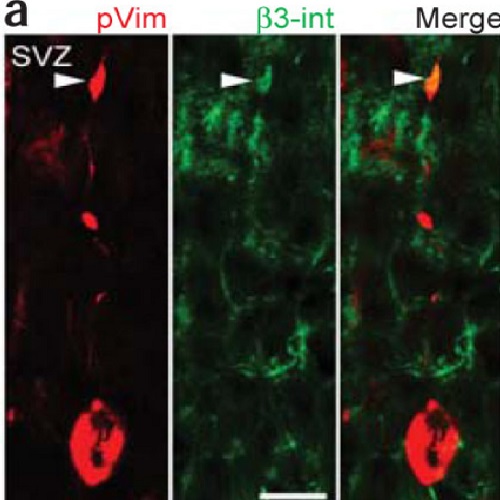OSVZ progenitors of human and ferret neocortex are epithelial-like and expand by integrin signaling.
A major cause of the cerebral cortex expansion that occurred during evolution is the increase in subventricular zone (SVZ) progenitors. We found that progenitors in the outer SVZ (OSVZ) of developing human neocortex retain features of radial glia, in contrast to rodent SVZ progenitors, which have limited proliferation potential. Although delaminating from apical adherens junctions, OSVZ progenitors maintained a basal process contacting the basal lamina, a canonical epithelial property. OSVZ progenitor divisions resulted in asymmetric inheritance of their basal process. Notably, OSVZ progenitors are also found in the ferret, a gyrencephalic nonprimate. Functional disruption of integrins, expressed on the basal process of ferret OSVZ progenitors, markedly decreased the OSVZ progenitor population size, but not that of other, process-lacking SVZ progenitors, in slice cultures of ferret neocortex. Our findings suggest that maintenance of this epithelial property allows integrin-mediated, repeated asymmetric divisions of OSVZ progenitors, providing a basis for neocortical expansion.

- Nat. Neurosci. 2010 Jun 02;13(6):690-9
- 2010
- Neurobiology
- 20436478
- PubMed
Enabled by:
